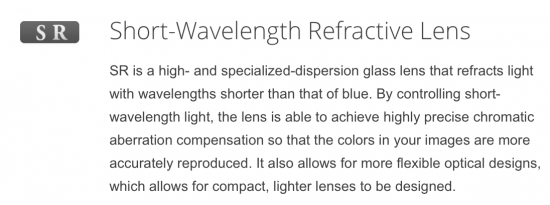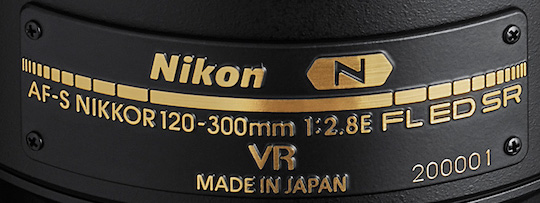


Nikon’s new short-wavelength refractive (SR) lens element explained:
“Nikon’s original, newly developed SR lens is a high- and specialized-dispersion glass lens featuring characteristics to greatly refract light with wavelengths shorter than that of blue. By controlling short-wavelength light that is difficult to compensate, light of various specific wavelengths can be more effectively collected achieving highly precise chromatic aberration compensation. Because this lens can be used in the same way as normal glass lenses, more flexible optical design is attained without limitations in lens layout. While realizing high optical performance, a compact and light lens can be designed.” (Nikon)
“SR is a high- and specialized-dispersion glass lens that refracts light with wavelengths shorter than that of blue. By controlling short-wavelength light, the lens is able to achieve highly precise chromatic aberration compensation so that the colors in your images are more accurately reproduced. It also allows for more flexible optical designs, which allows for compact, lighter lenses to be designed.” (Nikon)
“An SR (Short-wavelength Refractive) lens comprises of extra-high dispersion glass which helps correct chromatic aberration by highly refracting short-wavelength light. Nikon developed it by themselves, and Nikon group companies are producing it. It makes the image position of short-wavelength light (blue light) closer to red and green light, which helps lessen color bleeding. You can use an SR lens exactly like normal optical glass, which broadens a leeway for lens design and contributes to making a smaller and lighter lens.” (DC.Watch)

The only lens with SR element in the current Nikon lineup is the Nikkor AF-S 120-300mm f/2.8E FL ED SR VR (Adorama | B&H | Amazon | WEX | Park Camera | Calumet | Camera Canada) and the Nikkor Z 70-200mm f/2.8 VR S (Adorama | B&H | Amazon | WEX | Park | Calumet | Camera Canada).
See the full NIKKOR lens glossary here.







